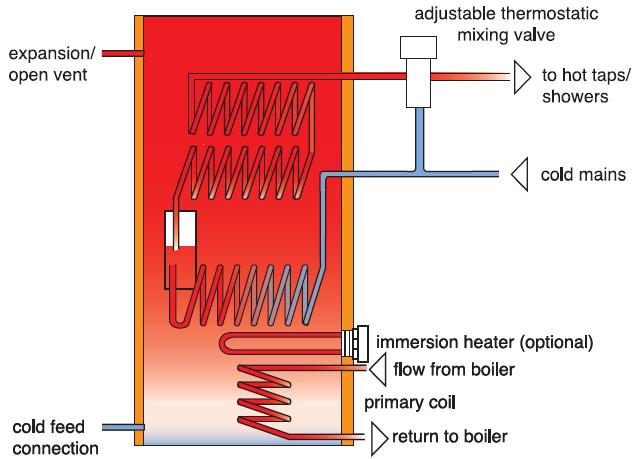The storage heater is only really going to be worth while when you have the special supply to give you cheap power at set times of the day. Clearly the standard brick type are no good as standby.
There are versions which heat water in a very well insulated tank then pump it around as and when required. This system may be worth looking at. You could heat the water with your back boiler and when required supplement it with electric.
That is a general plan and as you see one can fit as many hot coils as you want and gain heat from many sources and use it all to heat the same radiators.
Against the system is cost to install. It seems there are two types pressurised and non pressurised the former can work with hotter water but requires an annual test.
There is also the
Willis system have to take your hat off to the Irish here.
But to basics to heat a brick to 500 degs plus and no way can you stop the heat getting out. Heat water to 100 degs and yes you can insulate and stop the heat (energy) escaping. However it's the amount of water you need to store. The brick is not just clay or concrete but it has a huge amount of iron ore in the mix making them store more energy. So it's all down to house design have you got the room for the storage cylinder?



